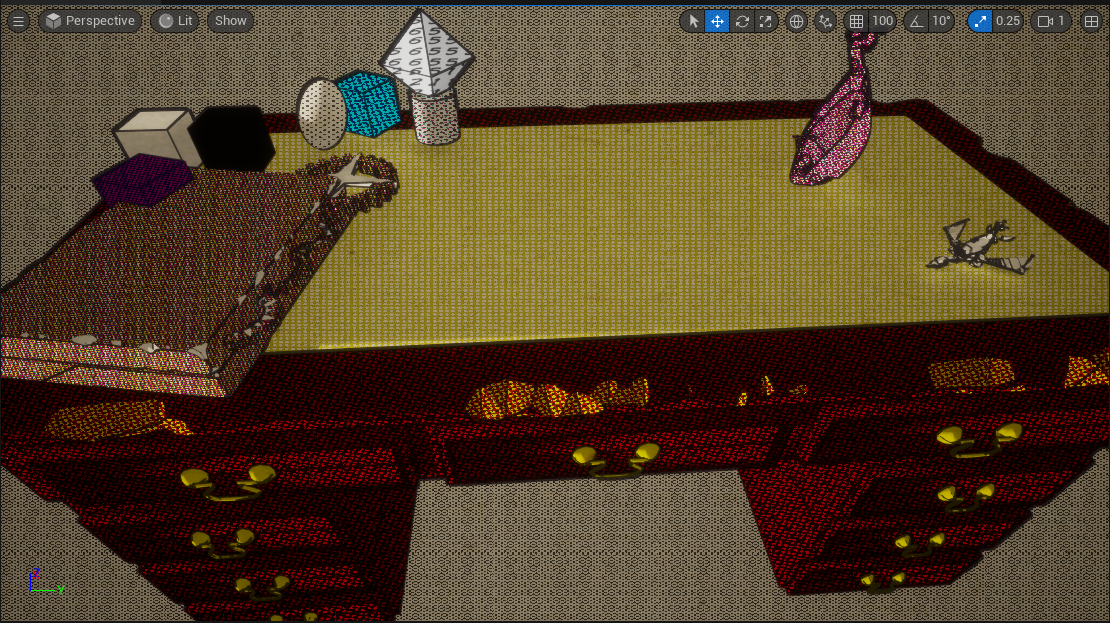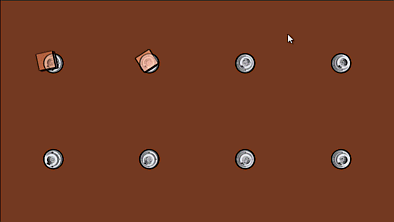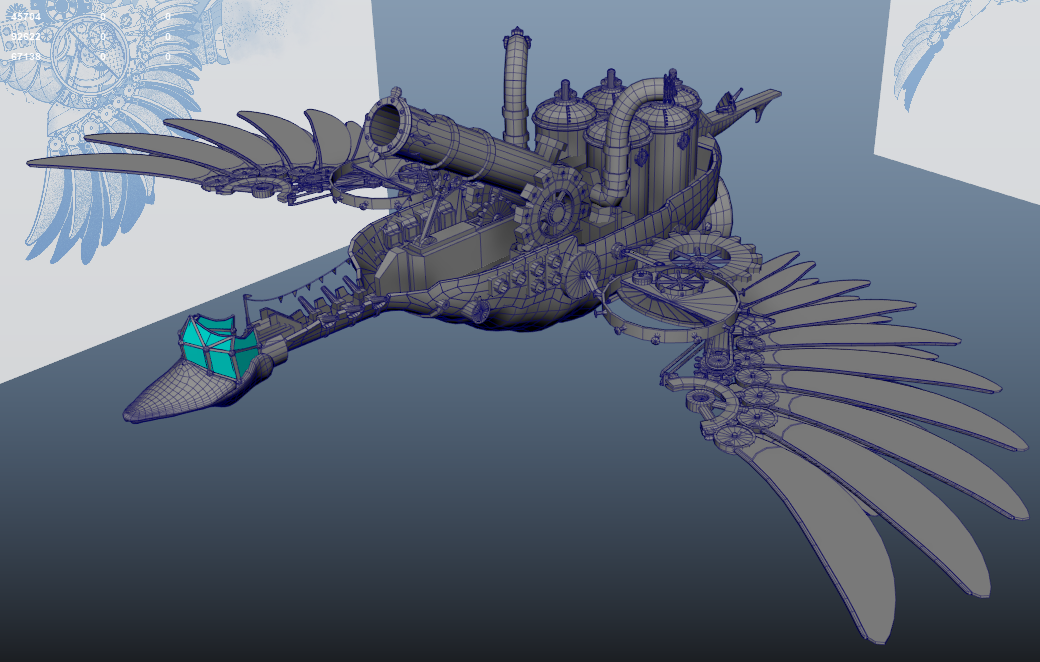Joy & Trepidation
Steelpinion is taking on new life with a new shader which creates a vintage comicbook look!

Some learning about old historic printers was required. To my astonishment, little patterns are used to blend a limited subset of colors together creating the vintage rosette patterns. Comic book dithering or (half tones) are not randomly assigned dots and damage, but rather each dot is precisely printed in order to rely on ink blending.
The Main Menu
In a previous article #7 "How Ship Customizations Work", talks about how the SteelPinion game is at it's heart two major activities (or workflows).
In our unity client build of the game, we focused on the combat cinematics, and rendering turn lifecycle effects . Now that we've swapped game engines, we'll instead first focus on the main menu before rebuilding the combat sequences.
OLD PROTOTYPE FLEET CUSTOMIZATION GIF

This old prototype desk represents some of what we'd like to see in the main menu room. We will be importing Leo's new model work of the ships and getting them linked up to the Fleet Customization menus. So instead of little cubes, we'd have the actual selected ship models appearing for further player customization.
Leo's Latest Work
We currently have 11 Motor customization options with original custom models. Then we worked on 14 Gyroscope options which also have their own original models. Now we are working on ships! I am very pleased to share one of them today, even though I haven't gotten it imported into unreal just yet.

The GOOSE is a medium sized pinion specialized for ranged artillery.
How Unreal 5 may Help
Our old pipeline for getting a simple gyroscope or motor was about 20 discrete steps or tasks which could take a few days (10-20 hrs) to complete.
For ships, that number is more like 50+ steps (120~240 hrs) to have a game-ready asset. Most of this complexity was due to the custom collision animations which were pre baked for each angle of attack.
I even built some custom tooling for unity to reduce steps; which unreal just has out-of-the-box. For instance, my custom anchoring system for unity was not needed in unreal due to their already existing skeletal socket system!
When we evaluated unreal, we could see that if we moved the constraint network steps out of houdini and into unreal; it would then be possible to have runtime collision simulations! Yes, we could shave down our LOD (level of detail) work with nanite AND also remove our lengthy pre-simulation work too!
In order to do that, I'll first need to master unreal's pipeline for "skeletal meshes" to "control rigs", then figure out "blueprint animations".
What's Next
We've got about a dozen 5 minute clips on the making of the game here on our Youtube DEVLOG. I've been including all my browser tabs used during my studies mostly for myself, but those links in the descriptions could help other game devs on a similar journey with houdini + unreal.
